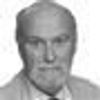In the centre of Prishtina, Kosovo's main city, there is a wide pedestrian boulevard parallel with the bustling lines of cars on Agim Ramadani street, where people promenade. It has the languor of a small Mediterranean town on a sunny Sunday afternoon. It is lined this time of year with strawberries piled high. Stall after stall. There are the occasional signs for honey between the long lines of punnets brimming with ripe, red soft fruit. Five minutes away is an exquisite 14th century mosque still in use.
Political scientists need labels and categories and "post-conflict society" is one of them. But you could be forgiven for thinking it does not feel quite right for Kosovo in the early Summer sunshine. Yet, as with Northern Ireland, a young government's firm intention of reconciliation confronts the realities of lingering social hostilities, stereotyping and insecurity, and, for Europe, an unusually young population who want things to change fast.
It was the high percentage of young people at Kosovo's annual interfaith gathering last month that struck me most. The theme was social media and they tweeted their way into the top ten trending in the USA for one hour during the proceedings. No mean feat. They were very clear that their parents' legacy of inter-ethnic and inter-religious hostility was a problem they wanted sorted out. In this they had the support of the - also youthful - civil servants from the Kosovo Foreign Service and the International Institute for Interfaith Dialogue who had invited them.
It was refreshing to have alongside religious leaders speakers such as Monica Bickert, head of product policy at Facebook, and Harold Hyman, editor and geopolitics expert from BFMTV, France's largest news channel. The convenor power of the government of this small, predominantly Muslim, Balkans country is no less impressive than its insight that championing interfaith dialogue and religious pluralism is an effective deployment of soft power. The vast Roman Catholic cathedral dedicated to Mother Teresa, almost finished but looking raw, (her family moved to Kosovo from Albania) was some testimony to this commitment, as was the beautifully preserved Orthodox 14th century monastery and church in the town's suburbs, a UNESCO heritage site. No-one had touched it during the war. Other churches had suffered badly.
Commitment to multiculturalism in Europe has come under threat as European societies react to terrorist threats and a small number of their citizens that have left for Syria to join Da'esh. The Kosovo government has experienced the same phenomenon on top of facing the immediate task of nation-building. It faces a strong headwind against the course it has been charting, trying to establish religious pluralism on sound foundations. The country's religious leaders also face significant new challenges.
But throughout Europe, the middle-aged men with beards- studying texts- having shared meals-and being nice to each other-practice of interfaith dialogue is correspondingly called into question. Has it not entrenched patriarchal authority structures? "What is the point?" "They go back and nothing changes". And so on.
But this is not a fair account of what the Kosovo government is achieving, or of the action-oriented nature of much interfaith dialogue today, which balances talking with doing. Too often it can be contrasted with the hands-on tough love work of CVE, Countering Religious Extremism. Often, though, its very practice, the threat of a good example, is driving a cart and horses through extremist narratives. The two are not mutually exclusive. Inter-religious dialogue is not a one - off inoculation rather it slowly builds up the immune system, building resilience to extremist narratives and proselytism.
It is too easy to laugh at, caricature and dismiss religious leaders today. True, in the main, they have little idea about effective use of social media for their religious messages. But that is more age-related than religion-related. A tweet from the Pope is front- page news. But for the past decade they have had a slew of new demands and expectations heaped on them with negligible resources with which to respond. That South Asian imams with a poor education and poor Islamic formation look, and sound, lost and defensive, when they are supposed to become overnight CVE warriors, is hardly surprising.
The national haemorrhaging of young recruits to the Da'esh charnel house has given a degree of urgency. But the absorption of liberal democratic ideas and new responsibilities by religious leaders takes time. The intuition that young people need to be at the front-line of countering religious extremism makes interfaith in Kosovo exciting and should be made into the country's premier export. The young women in white dresses with dark flowing tresses - well some - the handsome young men at their side, strolling together past the line of strawberry stalls, are Kosovo's most sophisticated weapon against Da'esh's modern death-cult.
So cut the religious leaders a little bit of slack.
